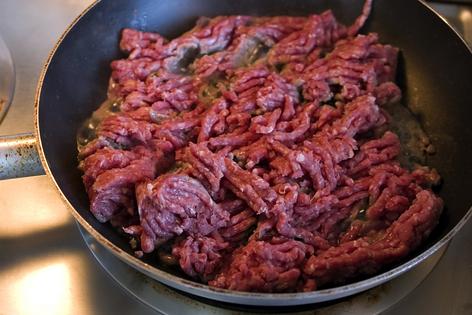7 foods you should never eat raw
Published in Health & Fitness
Plenty of everyday foods are perfectly safe and nutritious when prepared correctly, but when consumed raw or even undercooked, the ingredients put people at risk for illness, or worse.
Read on for a list of seven foods you should never eat raw, with input from professionals.
1. Flour
“The real reason you shouldn't eat raw cookie dough isn't the eggs, as long as they're pasteurized,” says Kristen Lorenz, RD LDN. “Uncooked flour is considered a raw food, since the processing of grains to make flour doesn't kill salmonella and E. coli, which the grain could be exposed to.”
2. Ground beef
Ground beef should never be eaten raw, and for good reason. “E coli is a bacteria that can be found in beef and can cause severe foodborne illness and even death. E coli is killed at a temperature of 71 degrees,” says Jennifer House MSc, RD. “A steak is safe to consume undercooked, as the bacteria on the outside are still cooked and killed. But hamburger or steak tartare is ground-up steak, so the bacteria can be distributed throughout.”
3. Poultry
Poultry in any form shouldn’t be eaten raw. Chicken, turkey, duck, goose, and more poultry should reach an internal temperature of at least 165 degrees before it is safe to serve, according to the CDC. “Raw chicken can contain multiple bacteria, including salmonella, that can cause foodborne illness,” says House. “Anyone who has experienced food poisoning knows that it’s not worth the risk.”
4. Kidney beans
“The risk of eating raw or undercooked kidney beans is not common knowledge,” says Lorenz. “Before they're cooked, raw kidney beans contain a high level of phytohaemagglutinin, which is a lectin, or protein, found in legumes. It can cause food poisoning-like symptoms from just a few raw beans. As long as you're cooking your beans adequately — soak for at least 5 hours, boil for 10 minutes or more — you will be fine!”
5. Milk
“I understand there's a growing number of folks who choose raw milk, but as a health professional, I can't recommend it,” says Lorenz. “Pasteurization was invented to help reduce the risk of illness from bacteria, because it was so common. There are a number of bacteria strains, such as E. coli, salmonella, Listeria, and Campylobacter, that have been found in and connected to raw milk consumption. Any of these could result in hospitalization or even death.”
6. Lima beans
“It is important to thoroughly cook lima beans, as they contain a compound called linamarin,” says Stacey Woodson, MS, RDN, LDN. “When ingested, linamarin is converted to cyanide. According to the CDC, even small amounts of cyanide exposure may cause shortness of breath, weakness, headaches, dizziness, eye pain, and other symptoms.” Oregon State University recommends cooking lima beans in a large pot of boiling water for 30 minutes, or longer.
7. Cassava
Cassava — also called yuca — is a root vegetable which grows underground, similar to potatoes, but starchier. “In the U.S., it is most commonly eaten in its ground form, tapioca, a thickening agent,” says Woodson. “Cassava contains dangerous levels of cyanide. It is essential to discard the skin and cook it before consumption.” The Centre for Food Safety recommends cutting cassava into small pieces, soaking it in water, and then thoroughly boiling it in a fresh pot of water.
(Real Simple magazine provides smart, realistic solutions to everyday challenges. Online at www.realsimple.com.)
©2024 Dotdash Meredith. All rights reserved. Used with permission. Distributed by Tribune Content Agency, LLC.










Comments